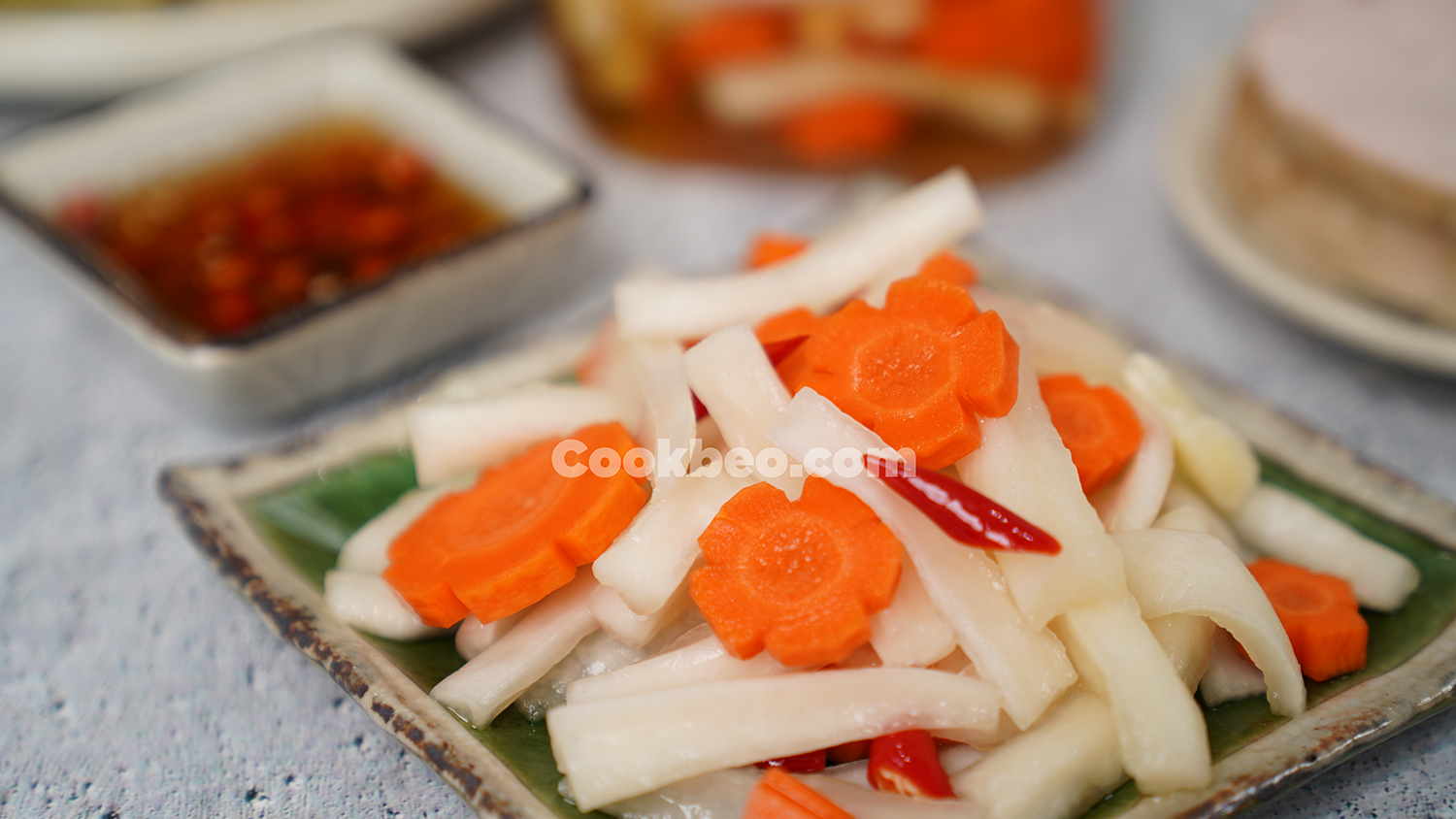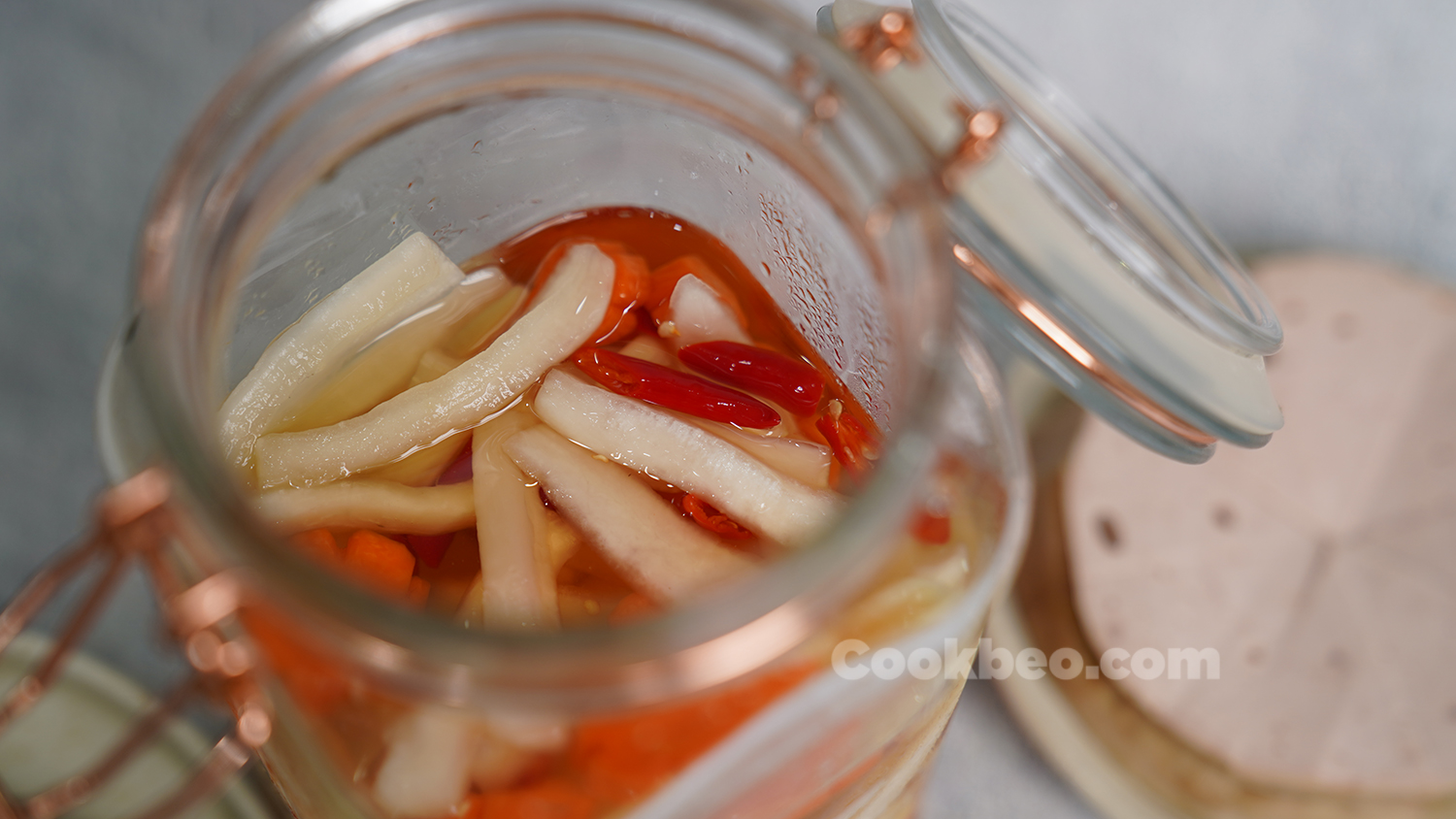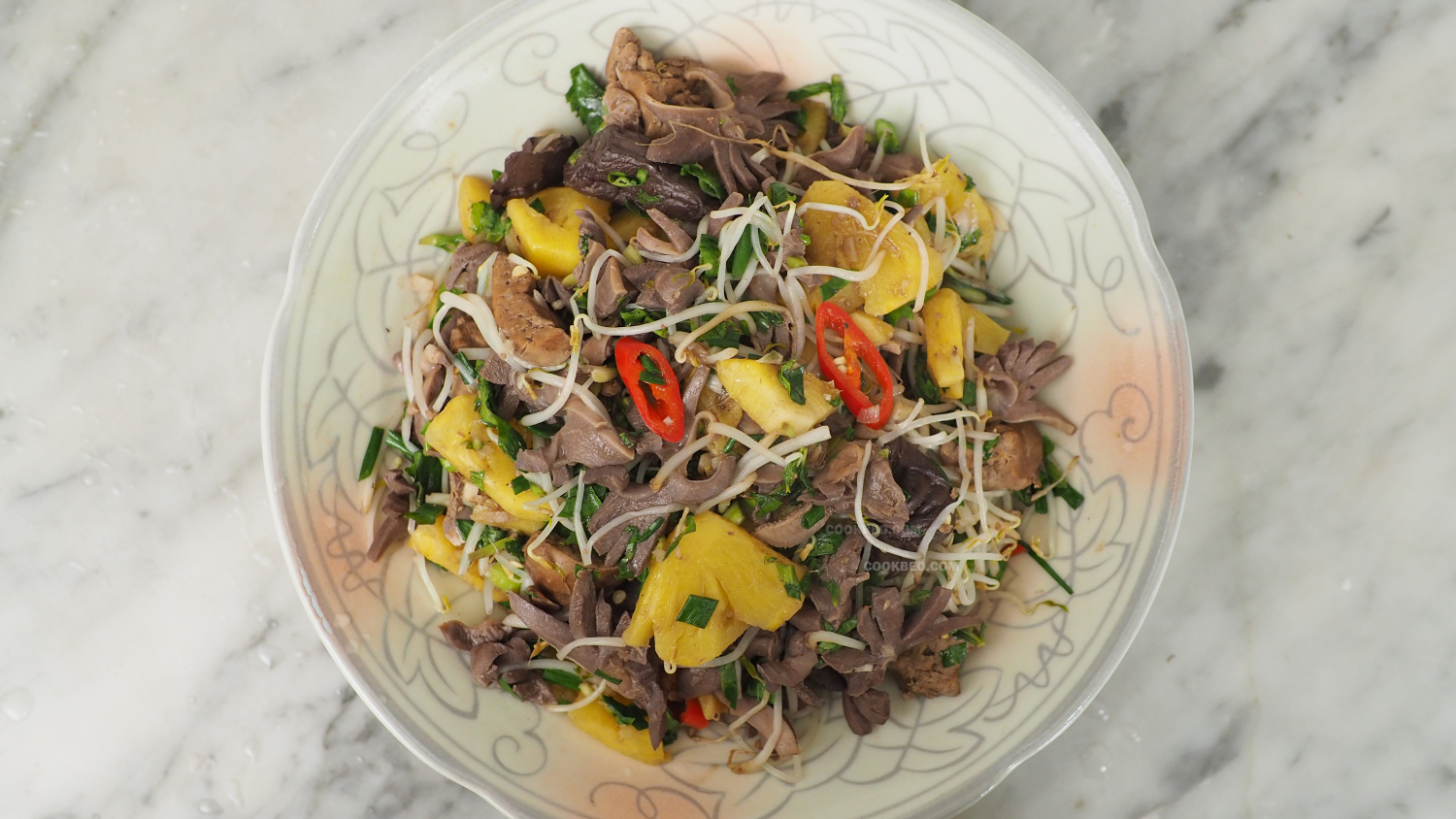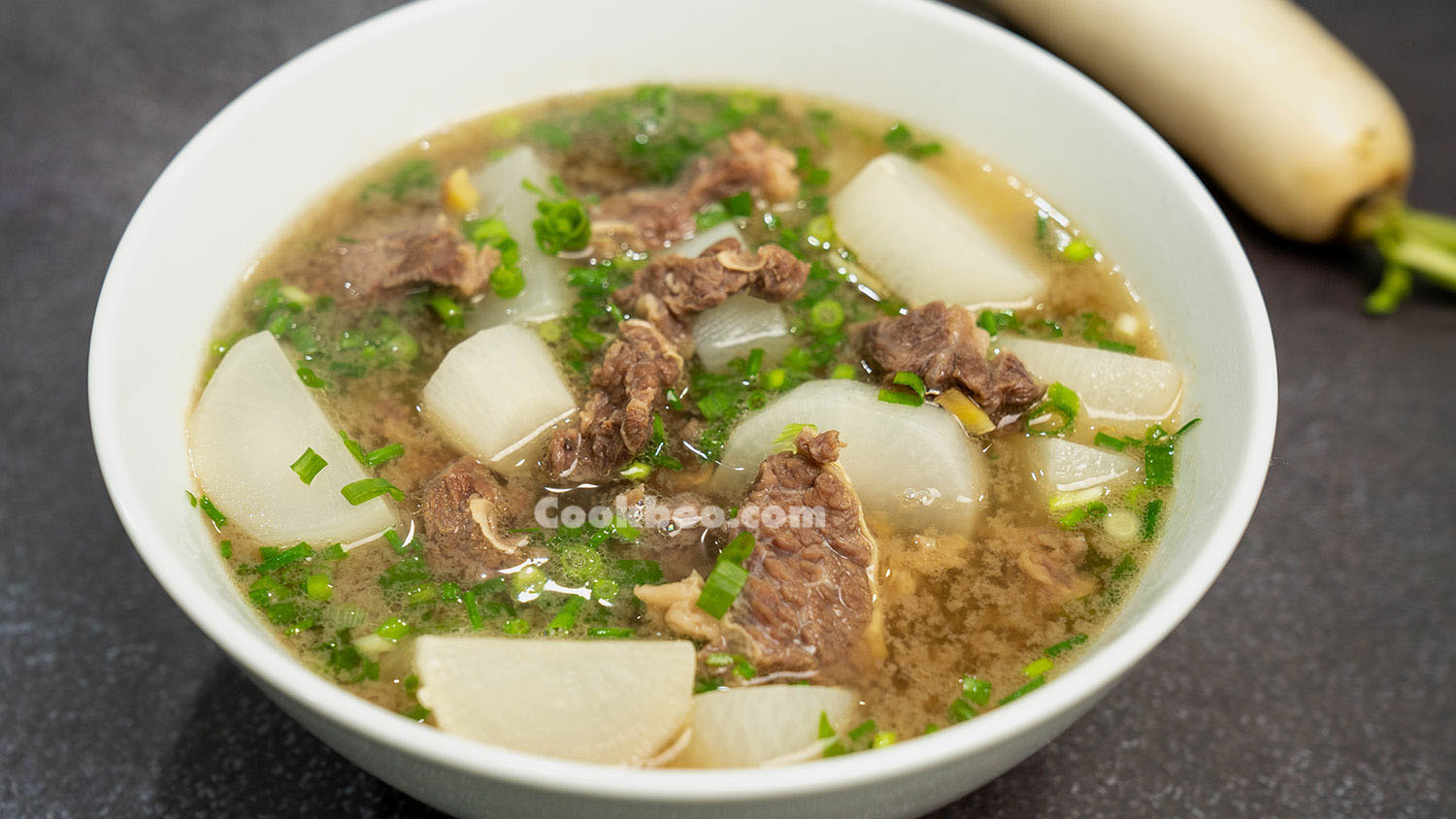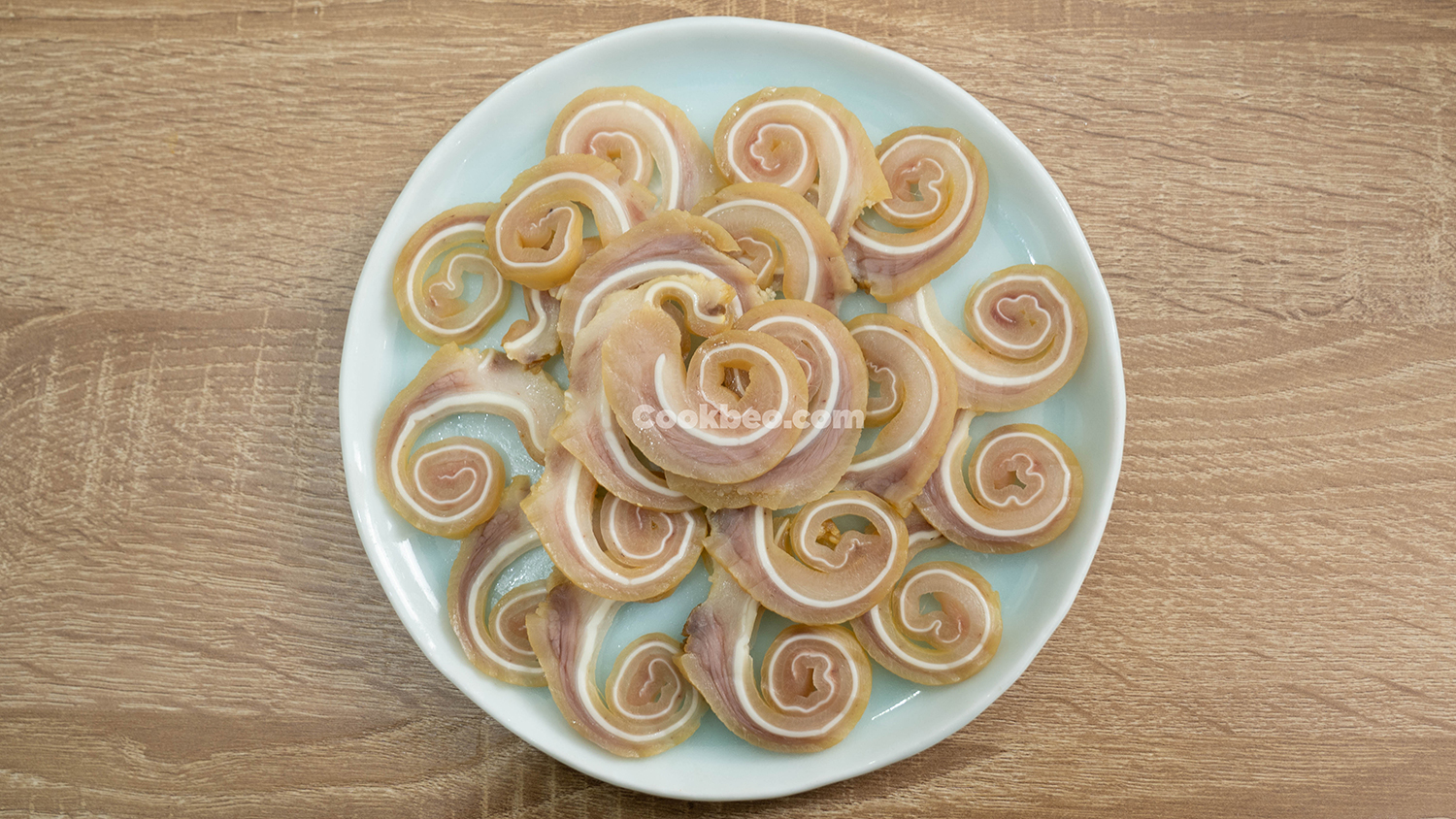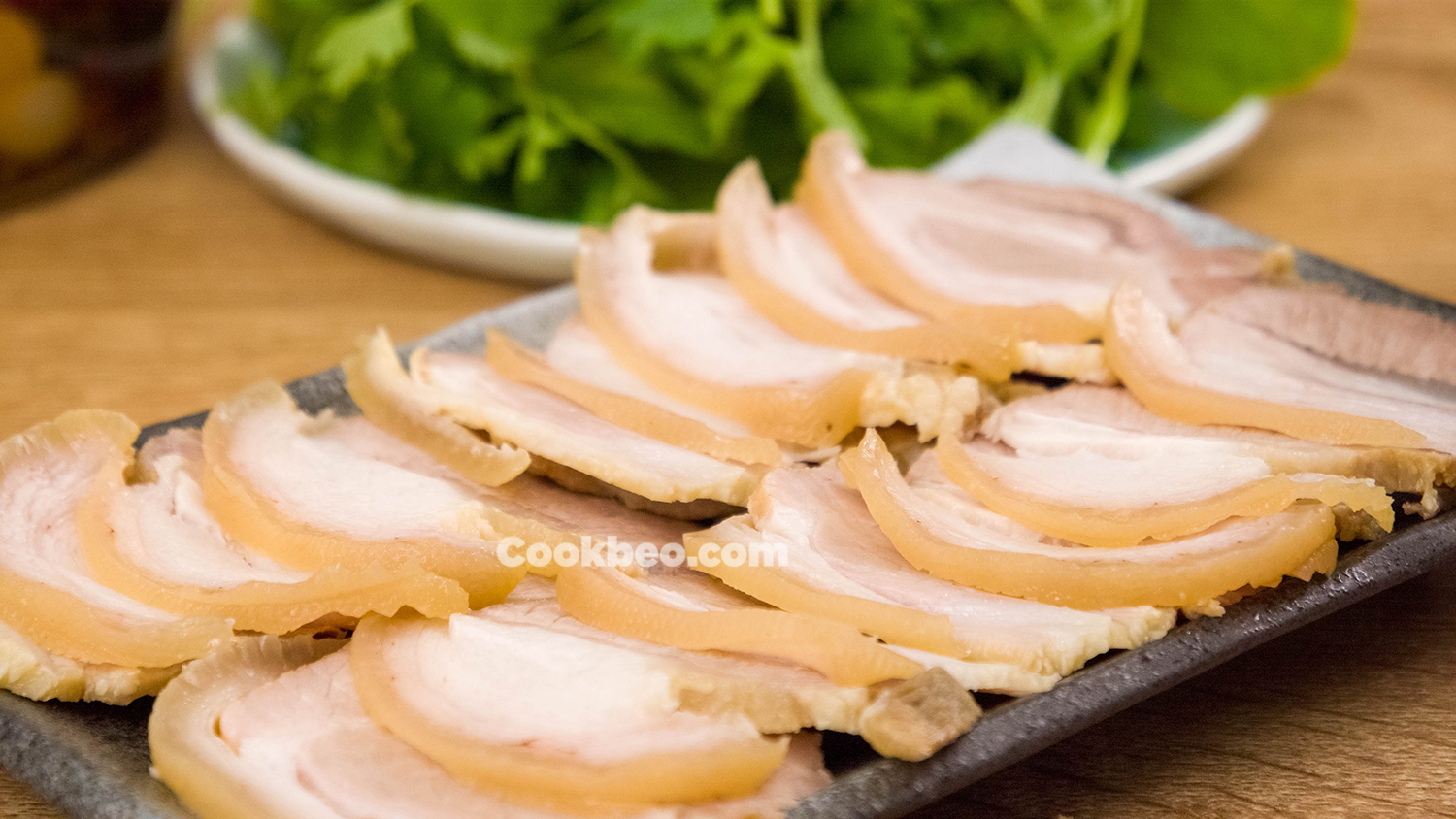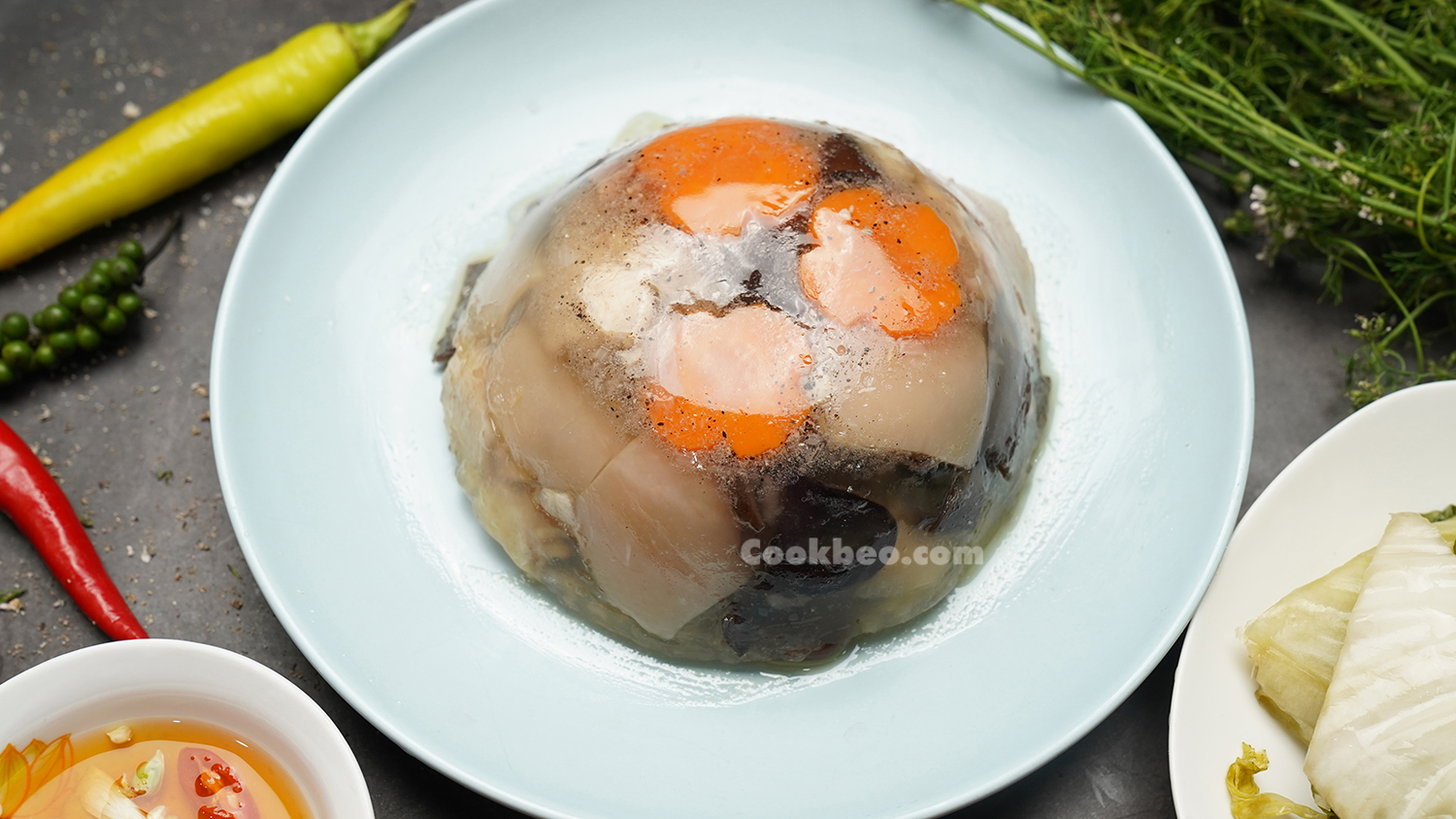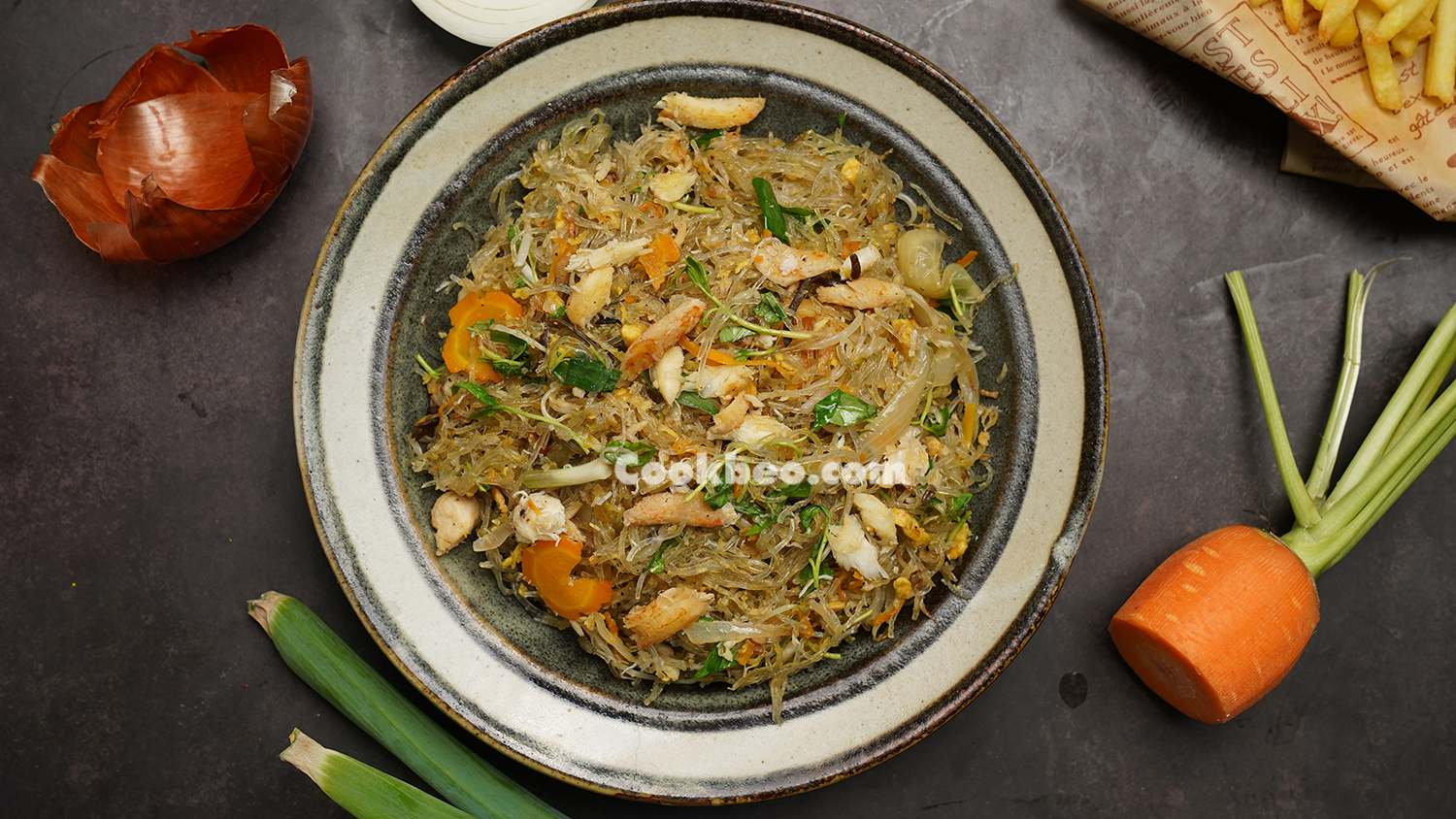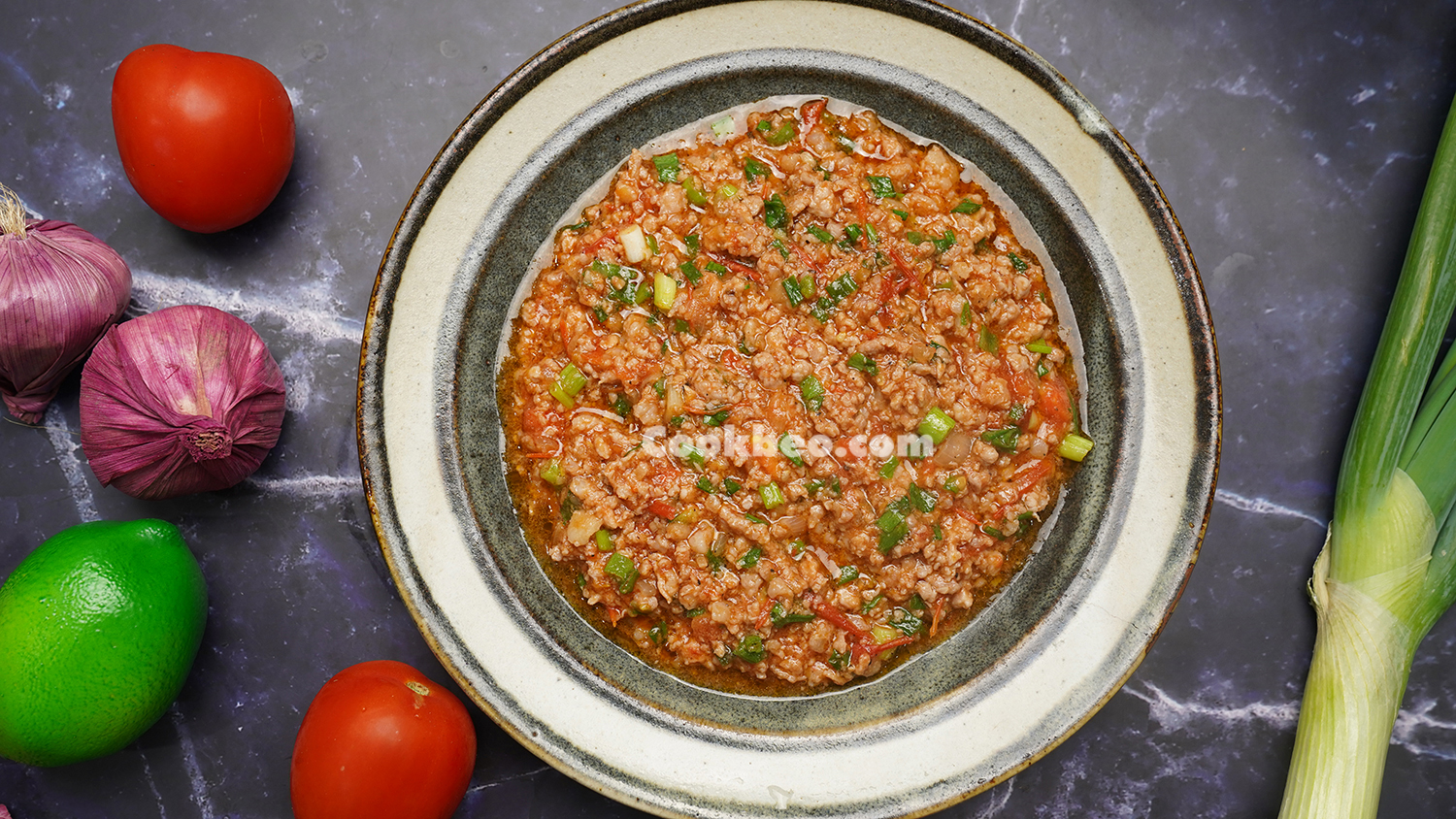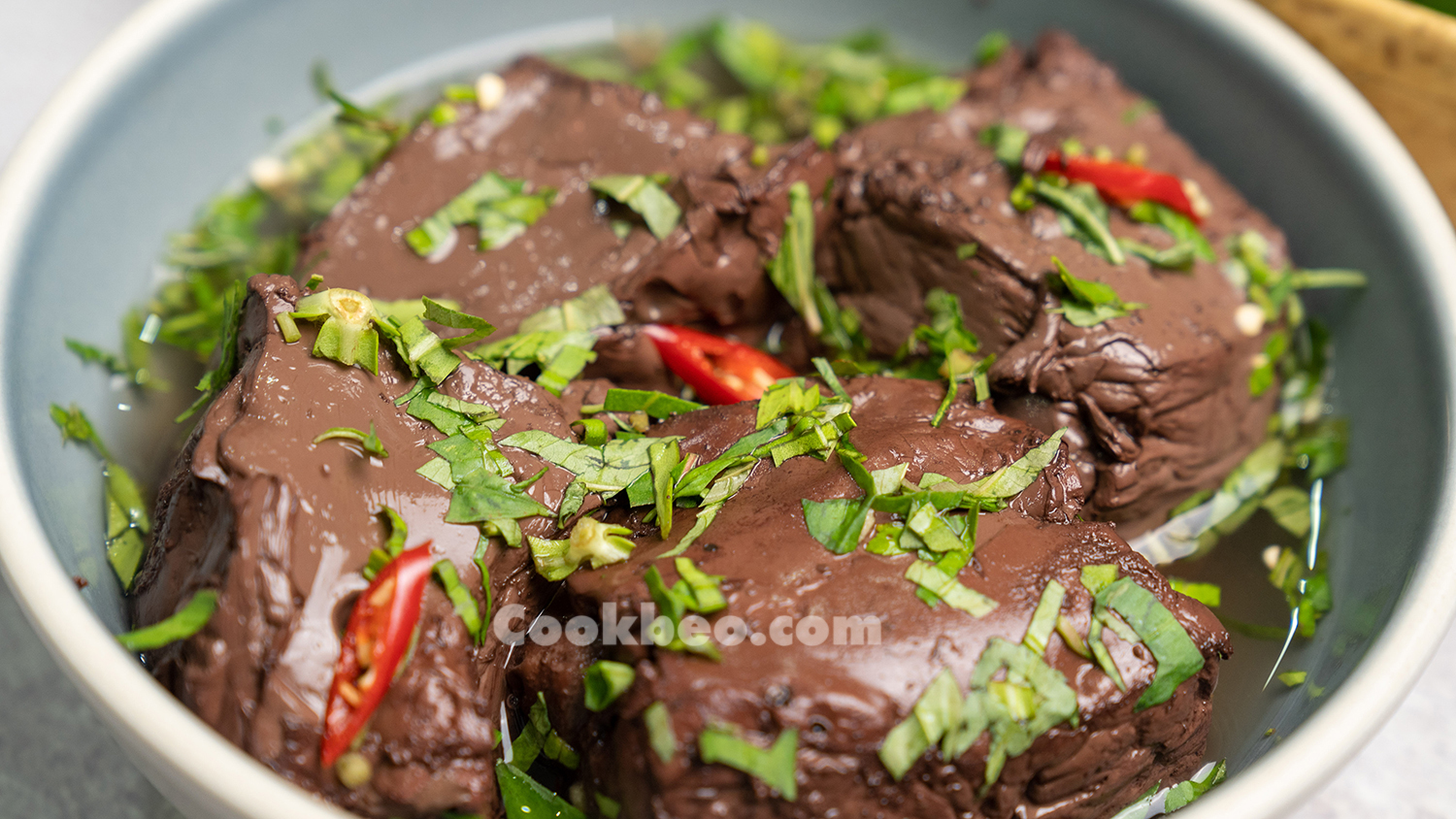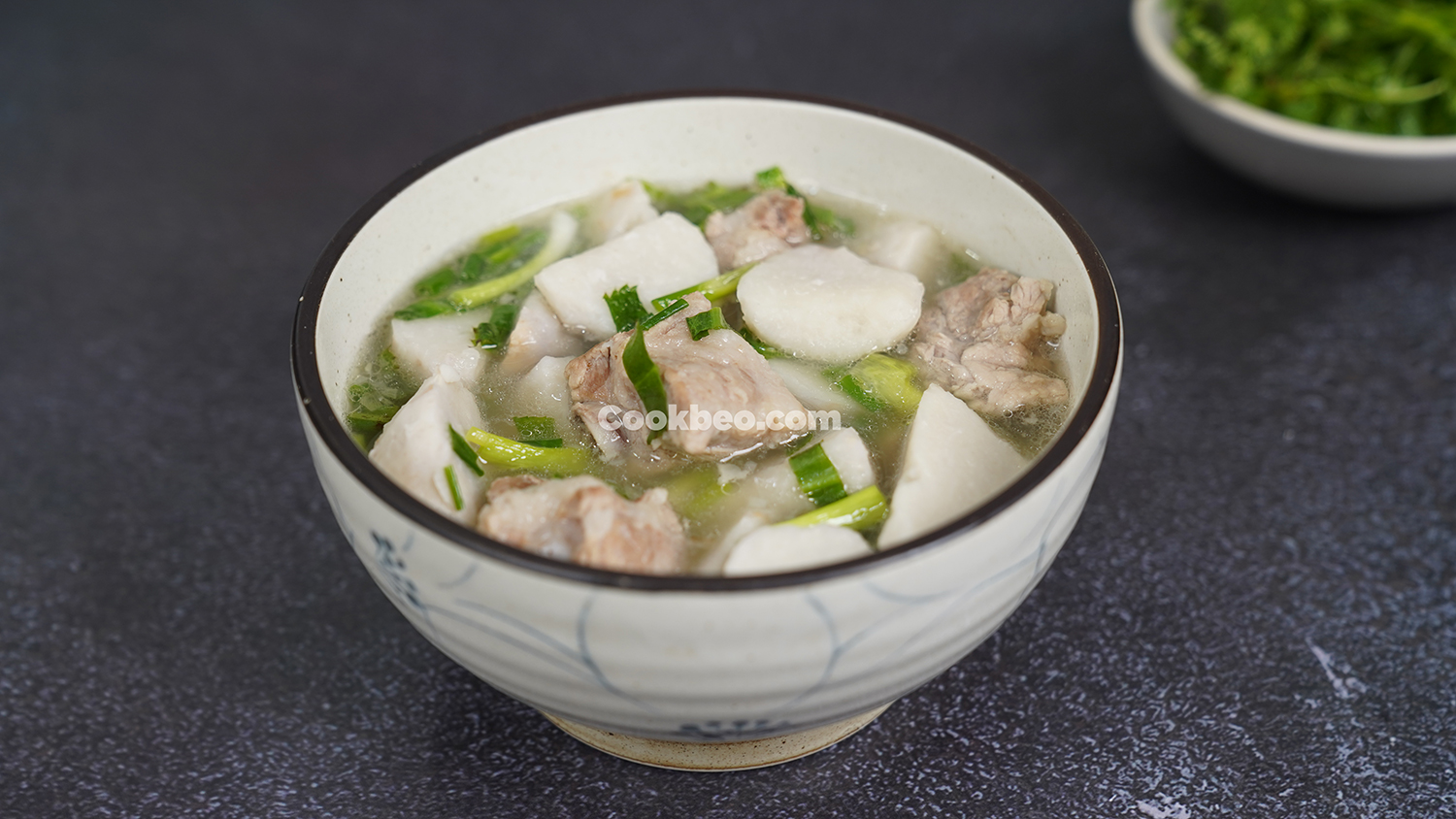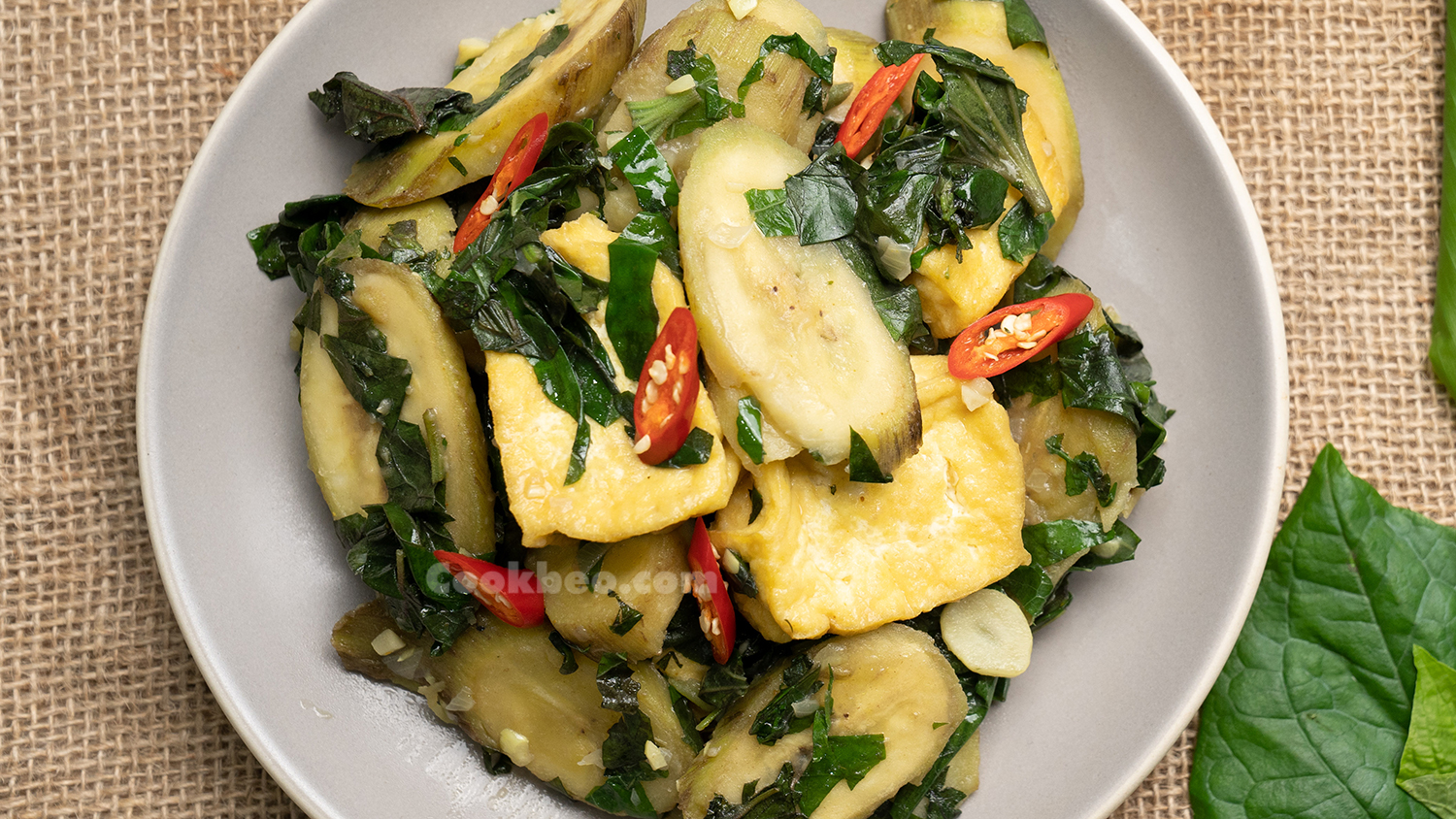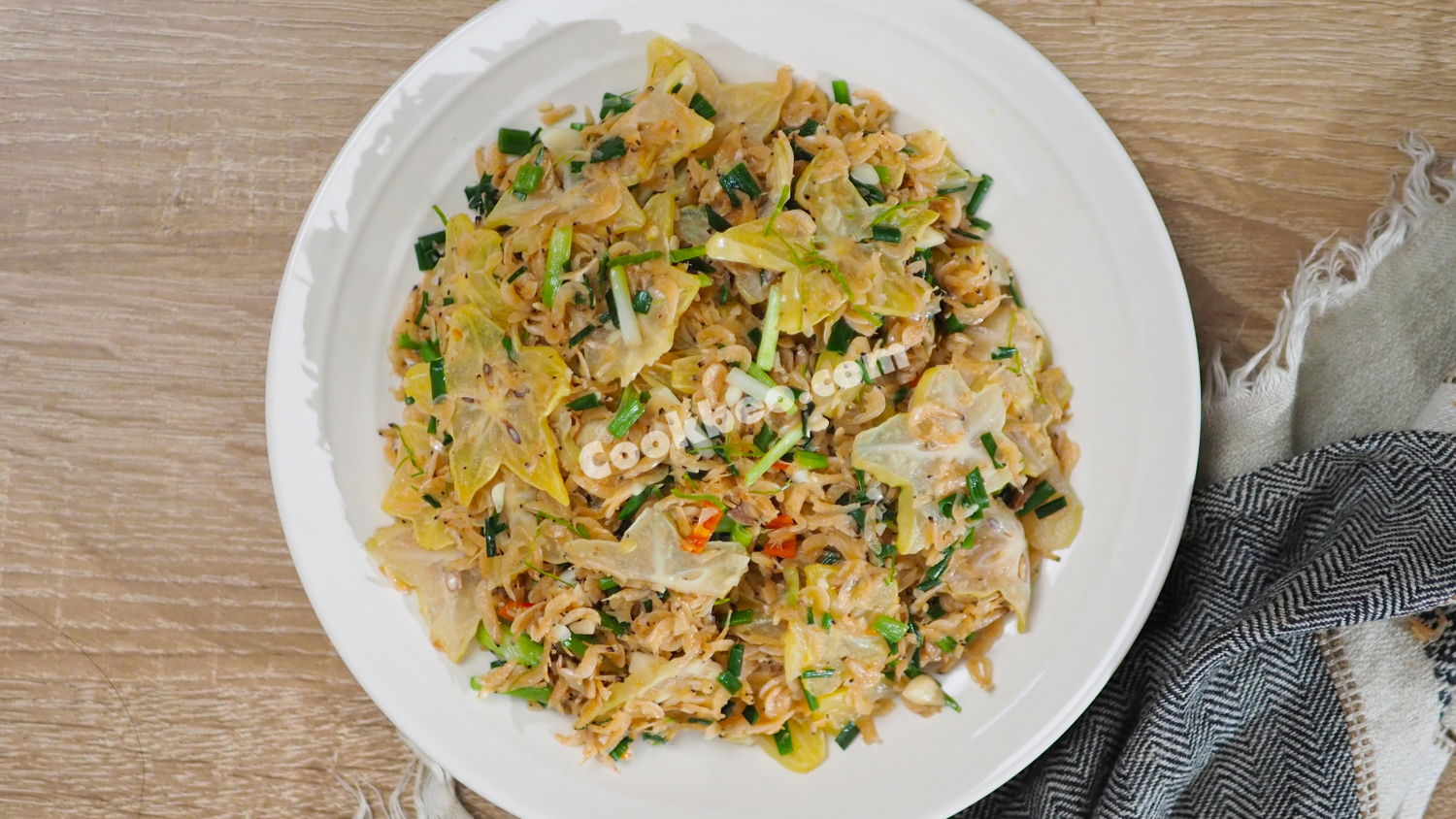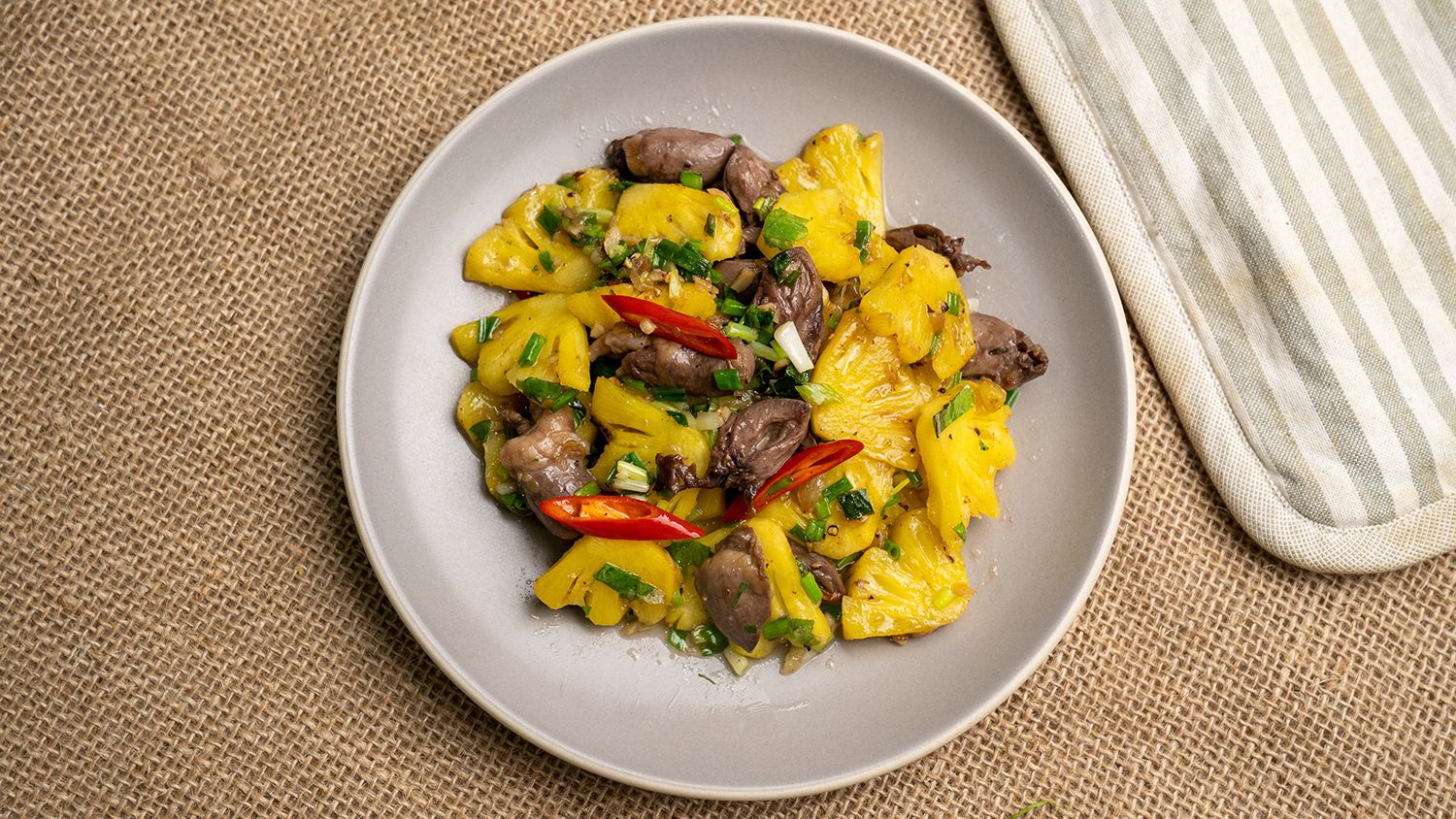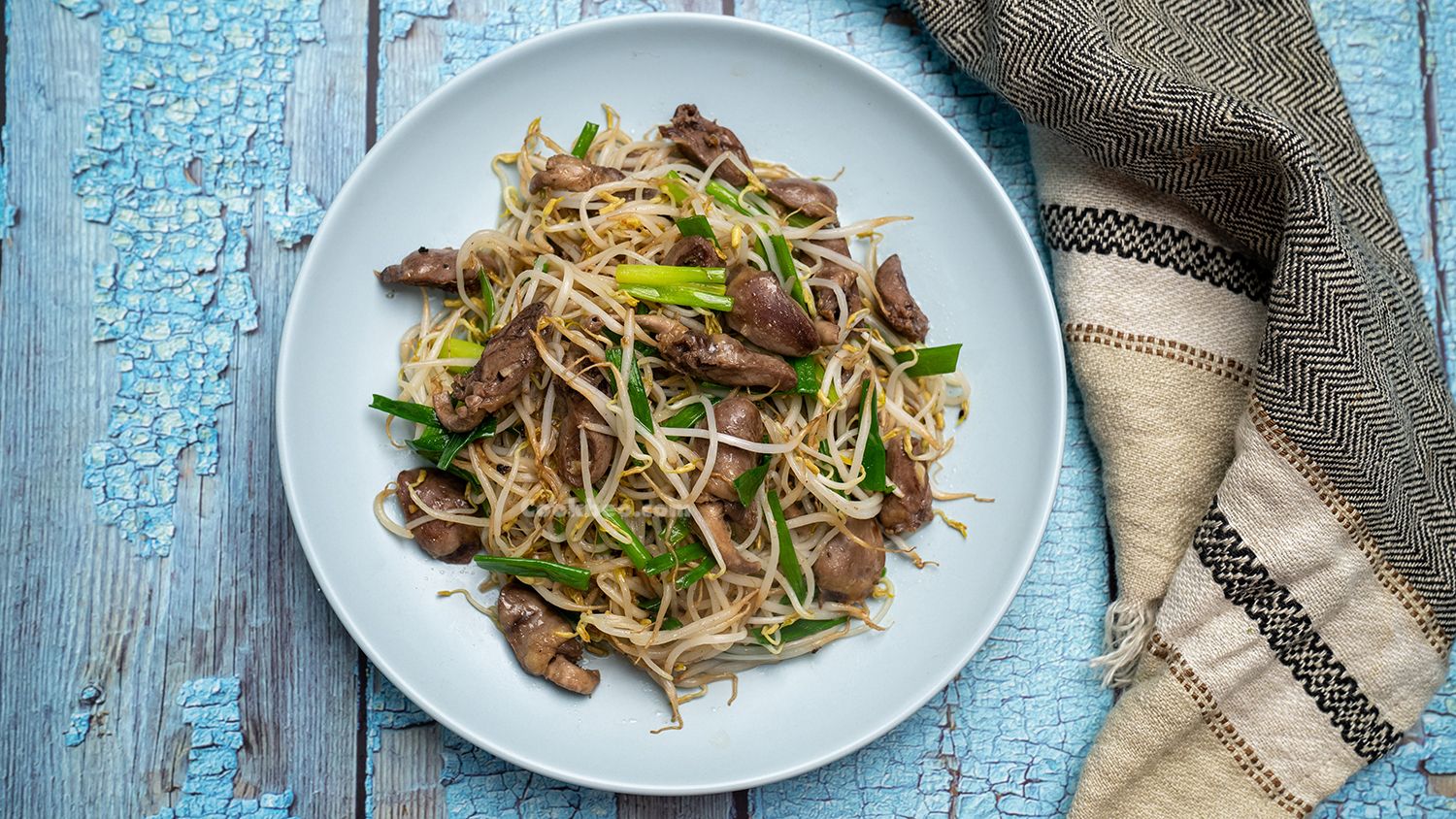How to Make Vietnamese Pickled Daikon Radish
Learn how to make sweet and sour pickled daikon radish that is crispy and flavorful, without becoming soggy or moldy. This crunchy, refreshing side pairs perfectly with braised pork, grilled meat, or traditional Vietnamese dishes like banh chung and banh tet during Tet holidays.
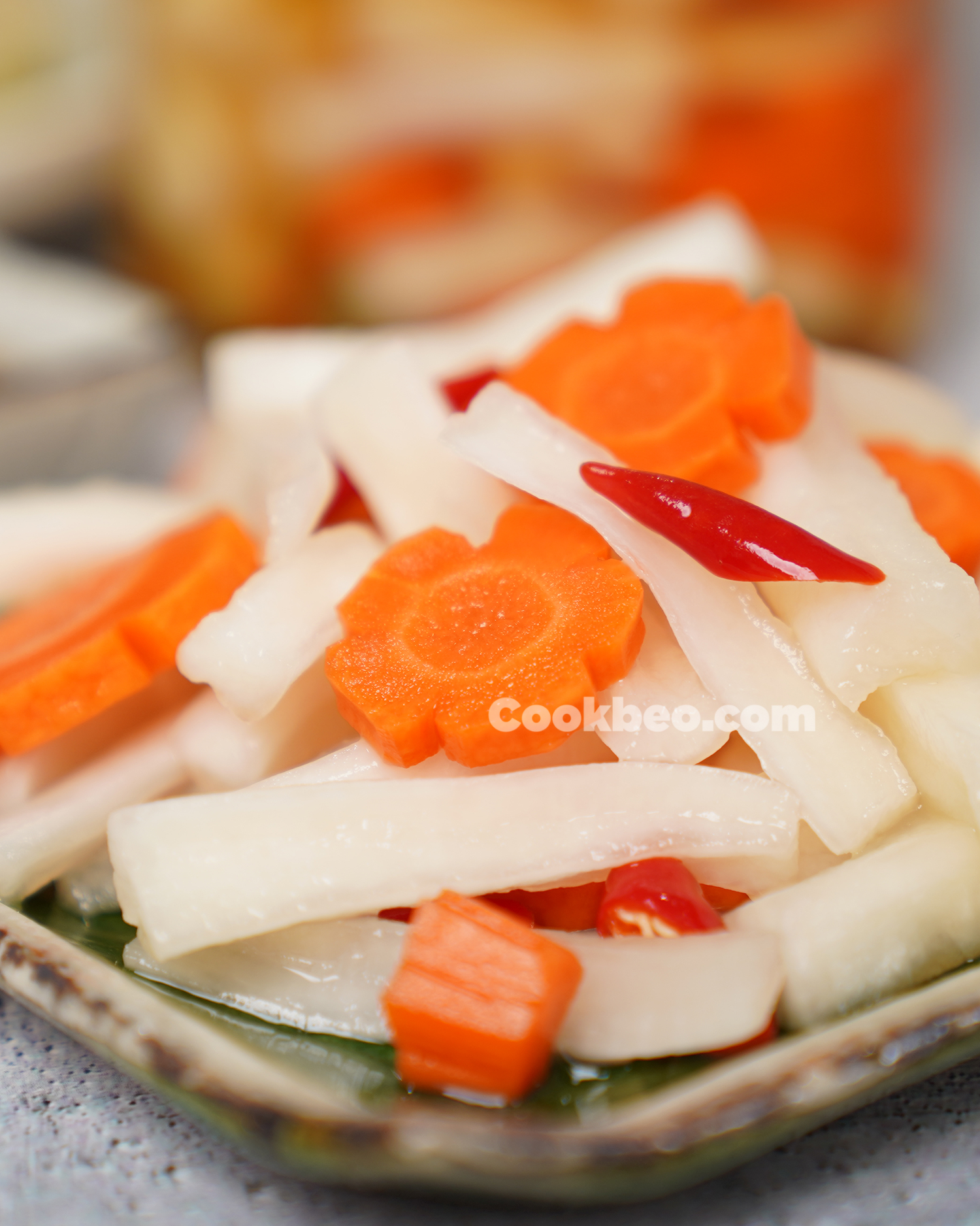
Ingredients
- 600g daikon radish
- 180g carrot
- 7-8 garlic cloves
- 2-3 hot chili peppers
- Seasonings: vinegar, sugar, fish sauce, rock salt
- 1.5-liter glass jar
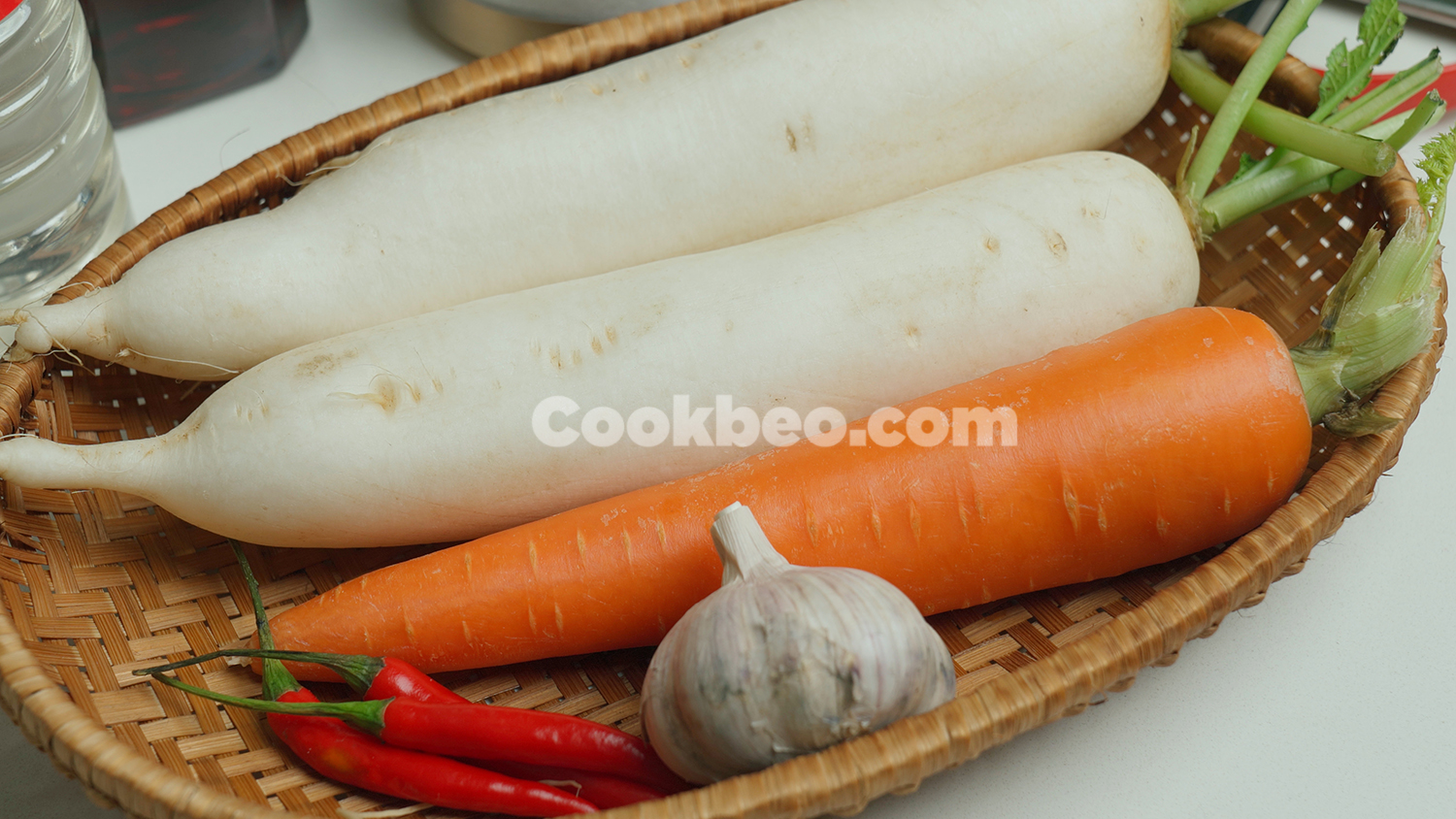
Instructions
Preparing the ingredients
Peel the daikon radish and carrots, rinse them thoroughly, and cut them into bite-sized pieces. You can also trim the vegetables for a more appealing presentation.
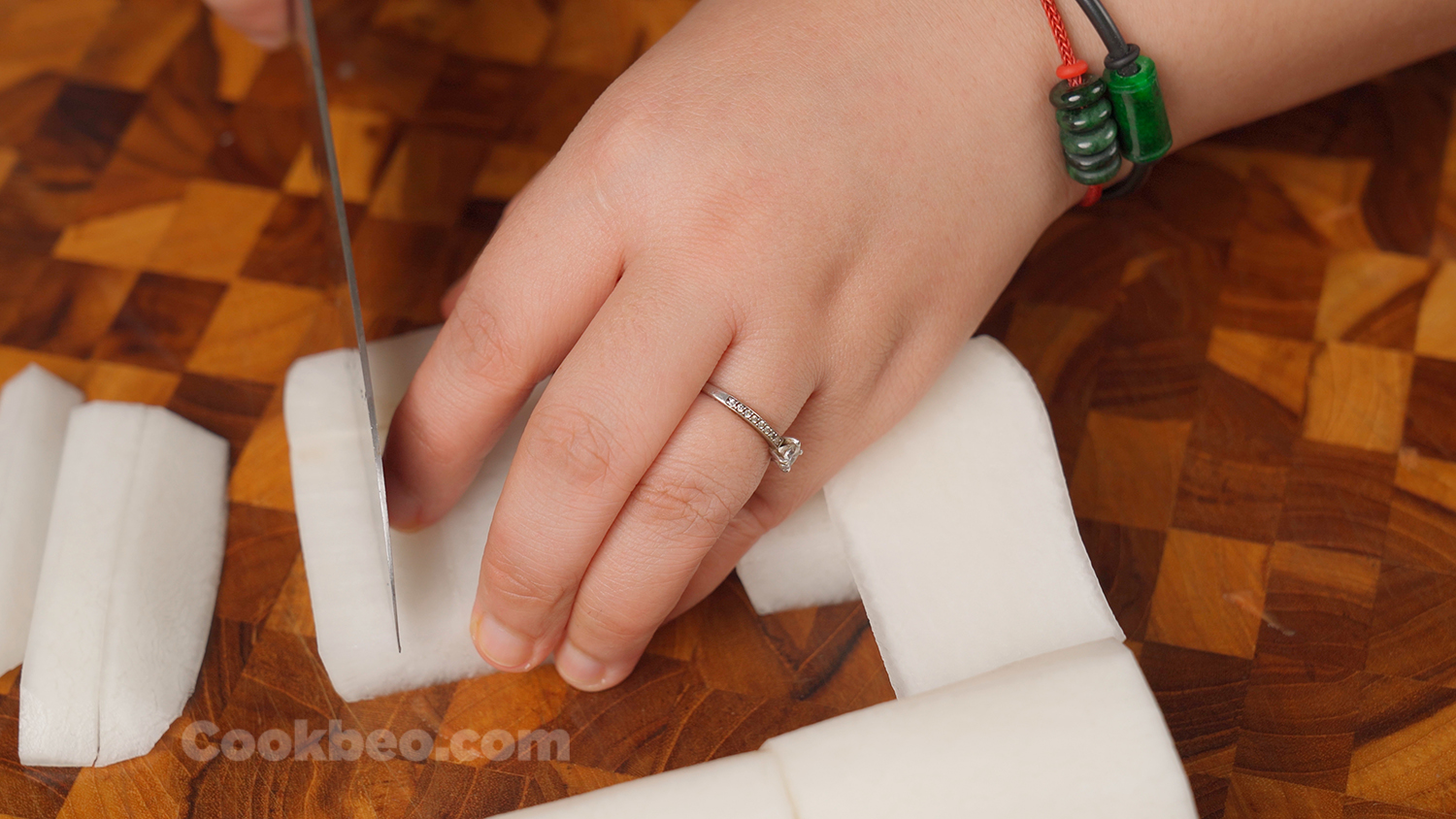
There are various ways to slice daikon for pickling, such as thin round slices, cubes, or julienne. Cookbeo typically cuts the radish into sticks about 1-1.5cm thick and 5-6cm long. Thinner slices or julienne work well for quick pickles to pair with grilled meat or banh mi.
For carrots, you can cut them into sticks, rounds, or flower shapes, but slice them thinner (about 0.5cm thick) as they are firmer and take longer to absorb the brine. Thicker carrots may taste too pungent.
After cutting, sprinkle the daikon and carrots with 2 tablespoons of rock salt and let sit for 15-20 minutes.
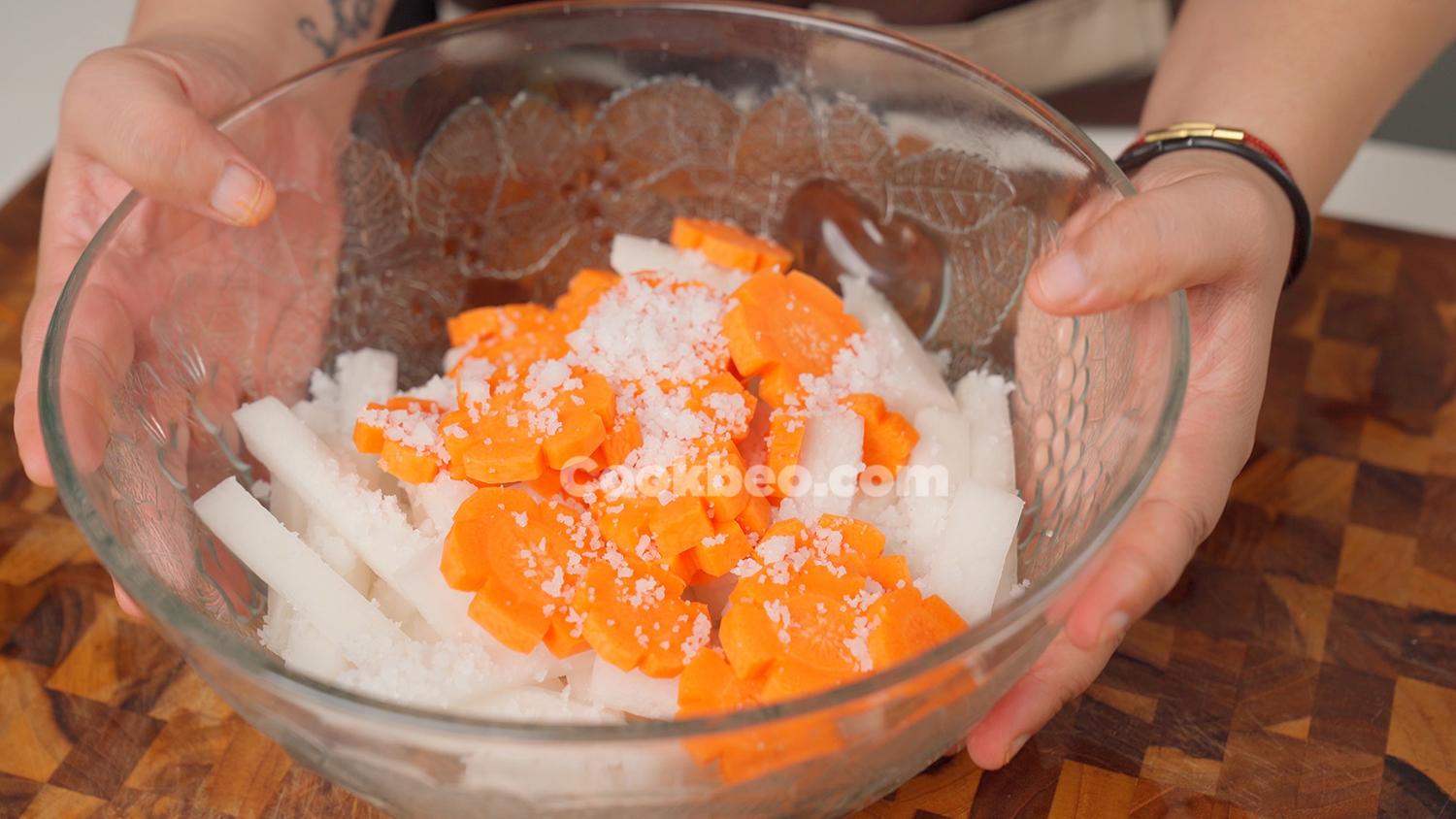
In some regions, people salt the vegetables overnight, rinse them, and sun-dry them before pickling, which makes the pickles last longer. However, longer salting makes the vegetables absorb more salt, so it's important to reduce the salt in the pickling solution to avoid overly salty pickles.
After salting for 20 minutes, rinse the daikon and carrots to remove the excess salt, then rinse with filtered water and let them dry completely. For extra precaution, you can soak them briefly in vinegar before drying.
While the vegetables are drying, prepare the remaining ingredients and the pickling solution. Peel and either crush or slice the garlic, and do the same for the chili peppers.
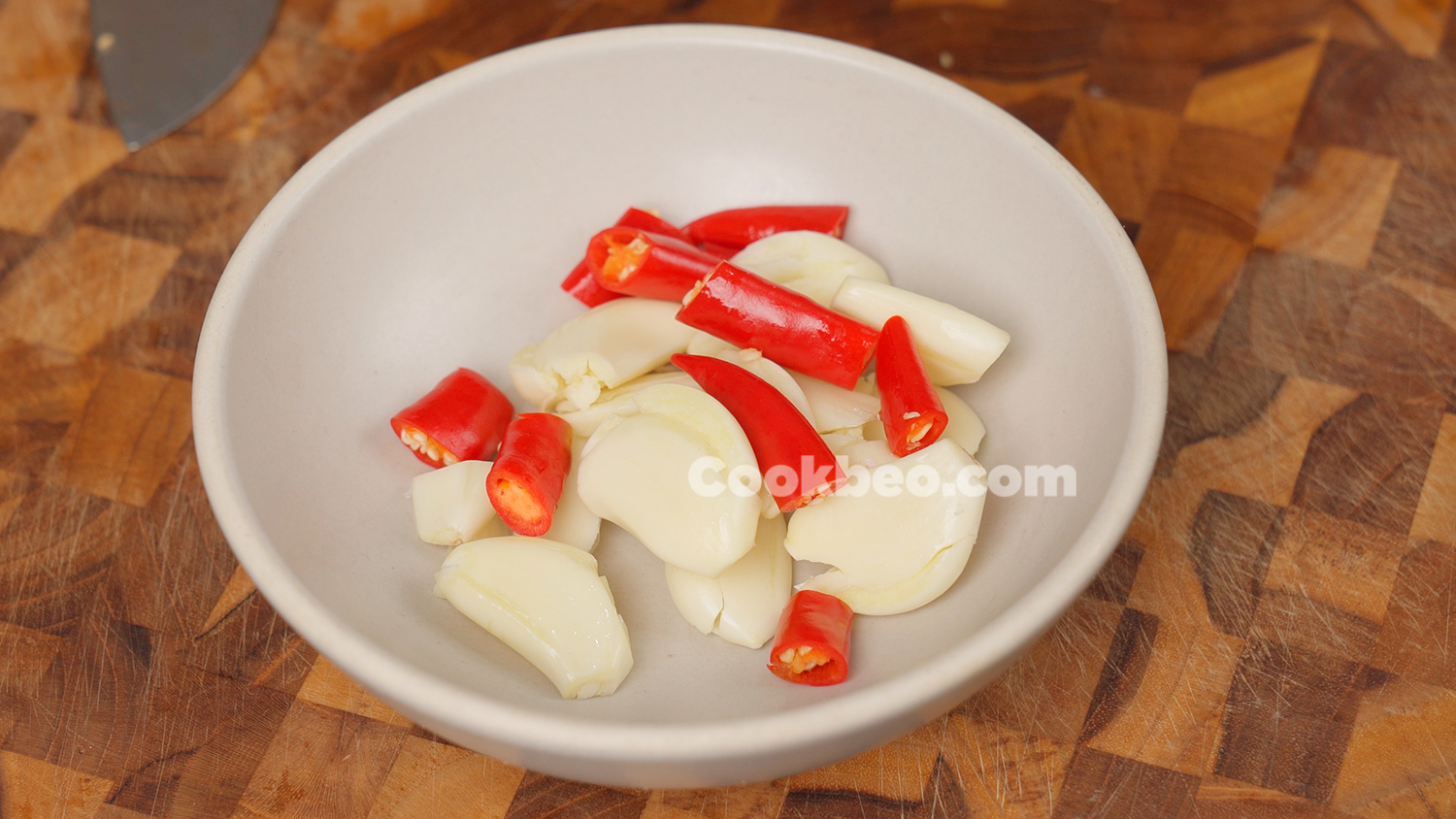
Make sure the jar for the pickles is clean and completely dry. If possible, rinse the jar with warm saltwater to ensure it's free of bacteria, which helps prevent the pickles from spoiling or becoming moldy.
Making the pickling brine
For around 600g of vegetables in a 1.5-liter jar, you will need about 600ml of pickling brine to ensure the vegetables are fully submerged, which prevents them from spoiling.
Cookbeo's brine recipe includes 300ml vinegar, 60ml fish sauce, 240g sugar, and 30g rock salt. Bring the mixture to a boil, then allow it to cool completely before pouring it over the vegetables.
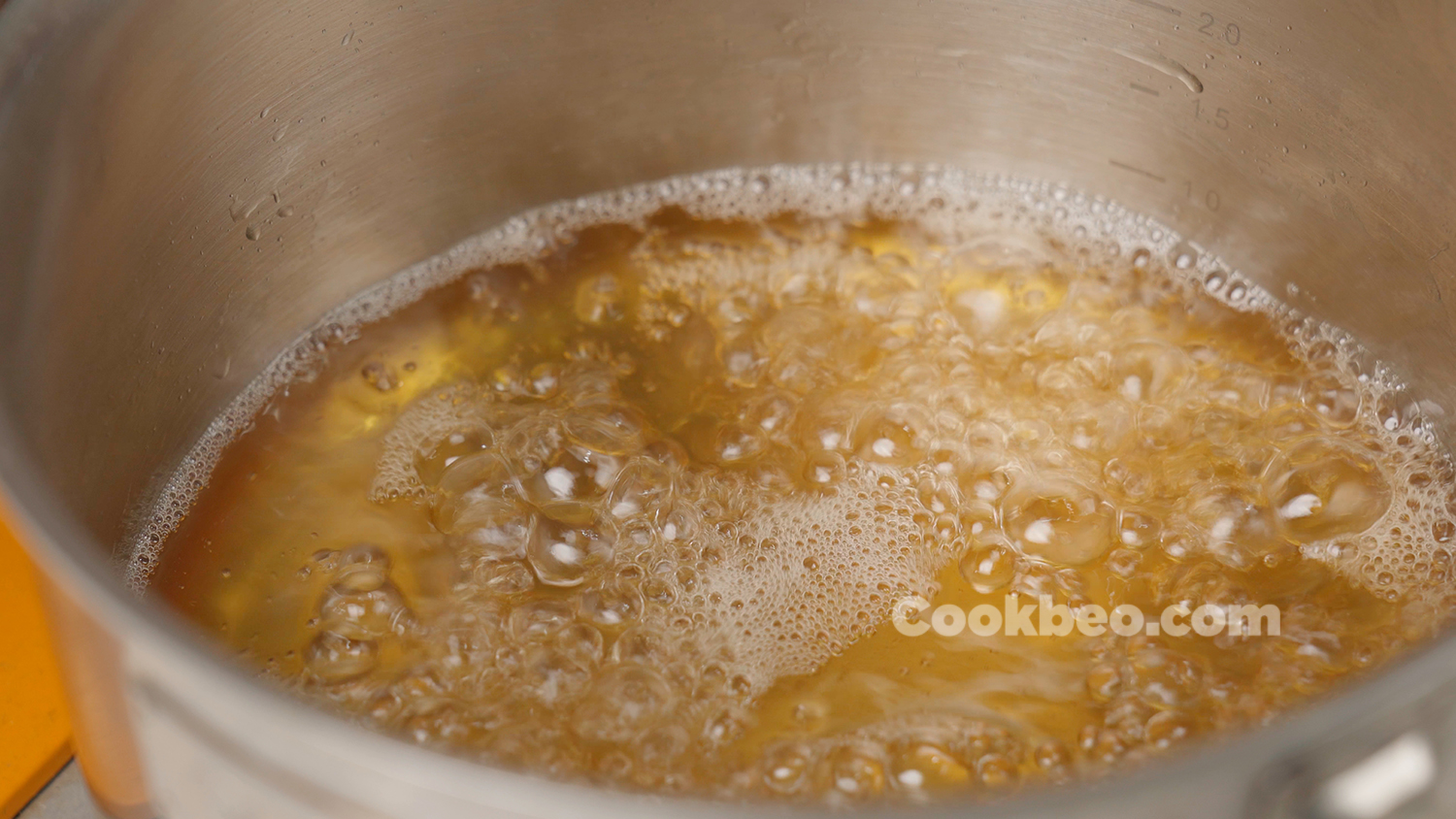
This recipe provides a well-balanced sweet and sour flavor, but you can adjust it to taste, depending on the acidity of your vinegar or the strength of your fish sauce.
If you want quick pickles, increase the amount of vinegar and sugar. For milder, less tangy pickles that you don't need to eat with strong dishes like braised pork or steamed rice, reduce the salt.
This brine can also be used to pickle other vegetables like kohlrabi, bamboo shoots with chili, cucumbers, or figs.
Pickling the daikon
Once the sweet and sour brine has cooled and the vegetables are completely dry, begin layering the daikon, carrots, garlic, and chili peppers into the jar. Alternate layers of vegetables and seasonings until the jar is full, then pour the cooled brine over everything to cover.
To keep the vegetables submerged, use a weight such as a bamboo stick or a food-safe plastic bag filled with water placed on top. Seal the jar tightly with a lid.
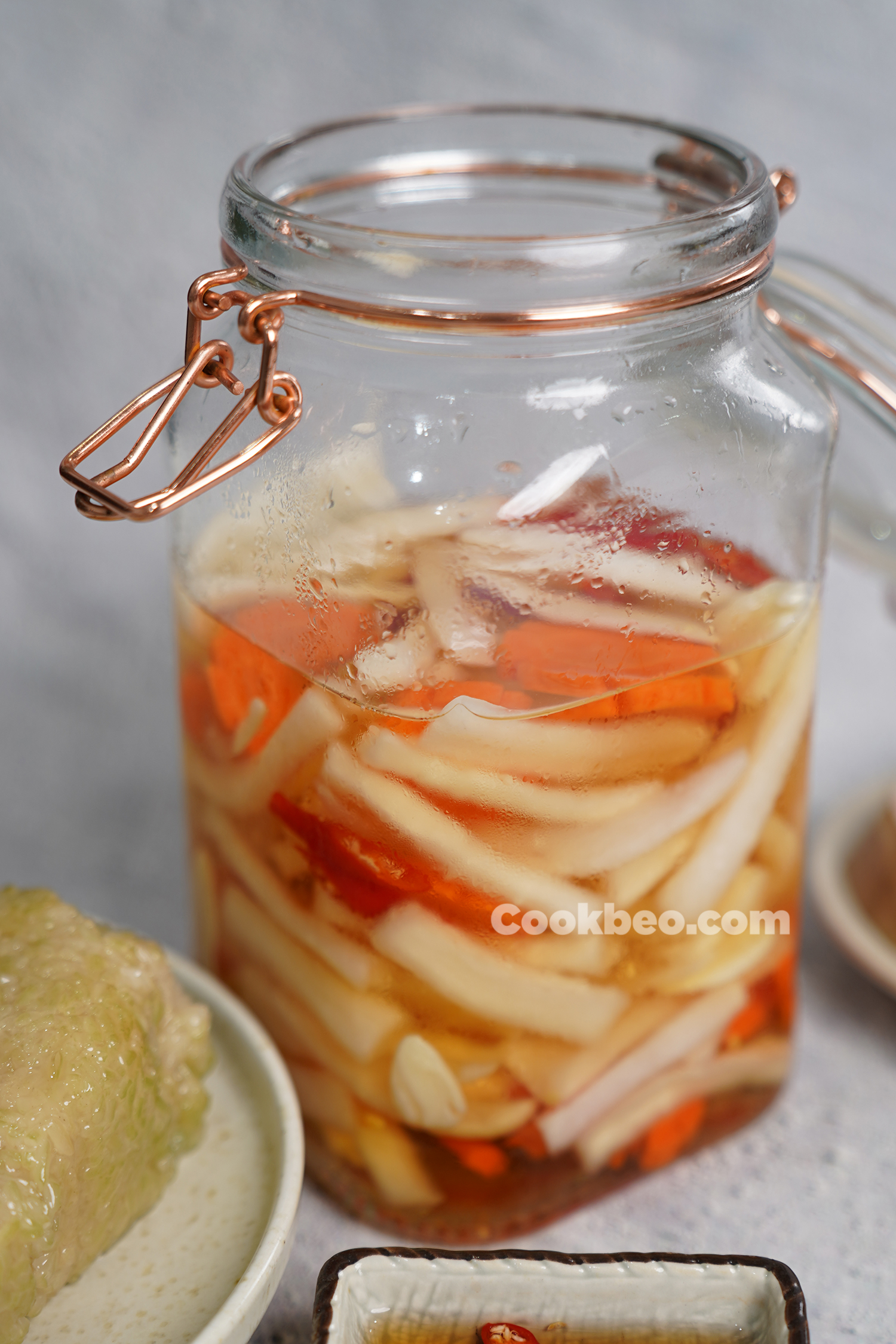
Let the jar sit at room temperature for 5-6 hours, then transfer it to the fridge. After another 3-4 hours in the fridge, the pickles will be ready to eat, with the perfect balance of sweet and sour flavors. Refrigerating the pickles slows the fermentation process, so they stay fresh and crunchy for longer.

